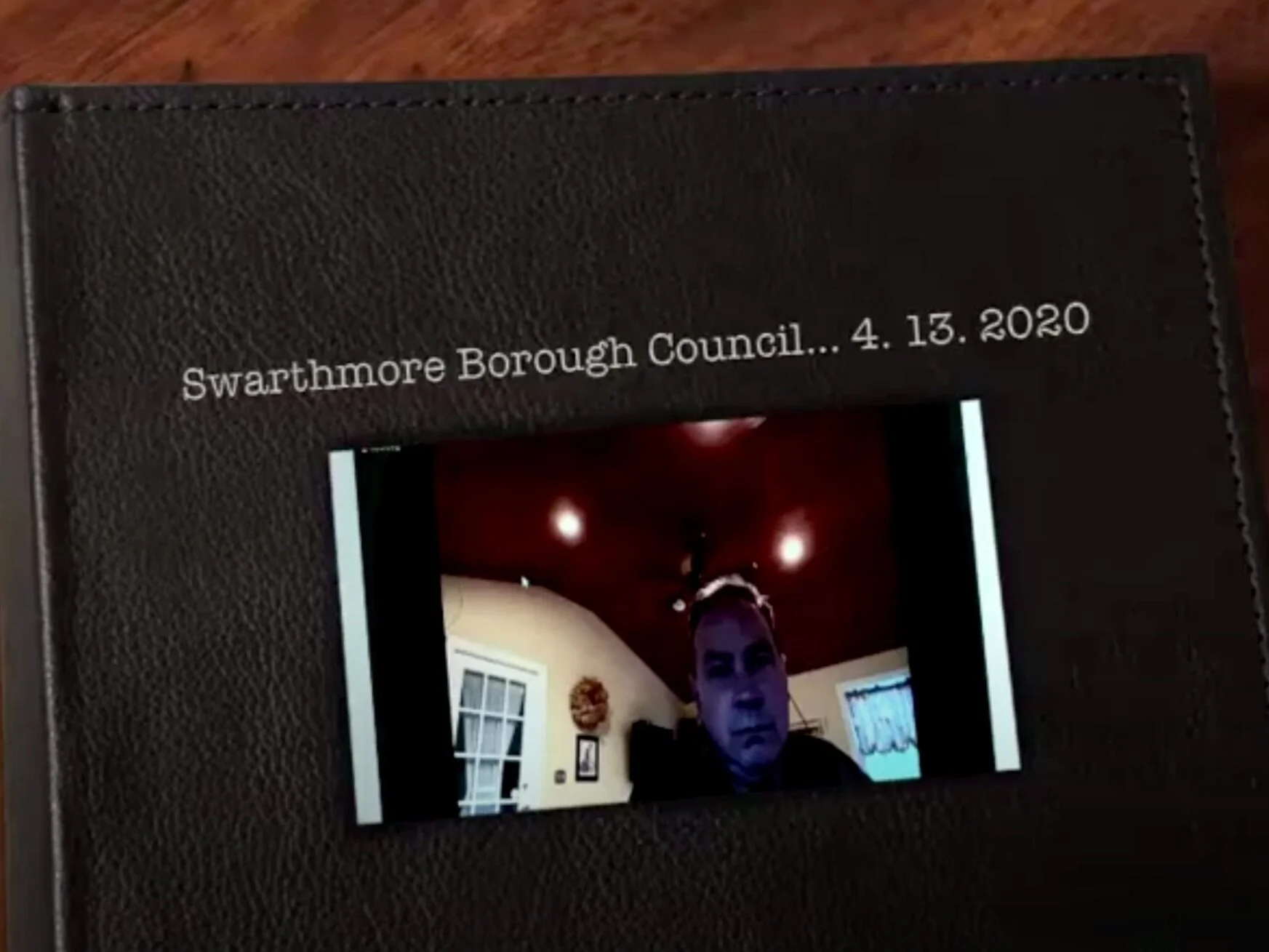Borough and CADES Reach Agreement
The Rutgers Avenue School is a temporary quarantine center for no more than 20 COVID-19 patients. Photo: Rachel Pastan
Swarthmore Borough and the Children and Adult Disability and Educational Services (CADES) reached an agreement on Sunday allowing for the continued use of the Rutgers Avenue school as a quarantine location for CADES clients with COVID-19 who normally live in group homes in the community.
Swarthmore Borough had filed an injunction in the Delaware County Court of Common Pleas on Tuesday, April 14, seeking to remove patients diagnosed with the coronavirus. Three such patients had been moved into the building at 401 Rutgers Ave. in Swarthmore on Sunday, April 12.
A week later, on Tuesday, April 21, Judge John Wheelan signed a consent order binding both parties to a series of terms and conditions intended to secure the safety of the patients, their care providers, Swarthmore residents, and first responders.
CADES’ Predicament
CADES rents the former elementary school, which it ordinarily uses for day programs for children and adults with intellectual and physical disabilities. The COVID-19 pandemic brought those programs to a halt. When CADES clients living in some of the organization’s 33 group homes came down with the virus, leadership decided the best course of action was to isolate and care for them in the empty school. “This was done in order to continue to provide the care, staffing levels, and services these individuals need and deserve, all while minimizing the risks of exposing others,” CADES CEO Julia Alleman wrote in an email.
Alleman was deeply worried about her clients, many of whom have underlying health problems that put them at particular risk. “Our population is so fragile,” she said. She was also concerned about her staff, many of whom are older adults, and many of whom live in intergenerational households with elderly parents and young children.
The Rutgers Avenue building seemed like the only solution. Patients could be housed in individual classrooms already equipped with lifts, adjoining bathrooms, and other amenities. The building is located in the borough’s IN-B Institutional District, where, Alleman noted, the Swarthmore zoning code permits dormitory use in some circumstances.
CADES notified the Swarthmore Police Department and Swarthmore Fire and Protective Services around noon on Sunday, as soon as the decision was made, Alleman said. “They know us well because...EMS needs to support us during the regular school day.”
The Borough’s Concern
On Monday, April 13, Swarthmore Police Chief Ray Stufflet informed Borough Manager and Zoning Officer Jane Billings and mayor Marty Spiegel that CADES had moved COVID-19 patients into the building.
The fire department was concerned about the safety of the patients and of first responders, according to Swarthmore Fire and Protective Association President Rick Lee. Lee says CADES declined to give the borough specific information about where and how it was caring for the patients within the building.
“It was never that we did not want this to happen at CADES,” Lee said. “It was that we need information. We preplan everything.” He said CADES had originally indicated it would be housing patients on cots in the first-floor gymnasium, but later turned out to be housing them in upstairs classrooms, a discrepancy that would have wasted valuable time in an emergency. “It’s a large building.”
Lee believes that the borough needed to proceed with legal action in order to get the information it required. “Sometimes litigation is the only way to get parties to the table.”
“Borough Council, Swarthmore’s mayor, staff, and first responders have serious health and safety concerns about the use of this building for this purpose,” the borough wrote in a press release on Tuesday, April 14.
Their complaint to the court, filed the same day, contested Alleman’s assessment that CADES’ use of the building did not violate the borough’s zoning code. While the zoning code permits using “college buildings” as dormitories in the IN-B district, the complaint states this does not allow the Rutgers Avenue school to serve as a “medical and residential facility.” The complaint further states, “There are no medical waste disposal facilities or protocols, the bathrooms were not constructed to provide bathing and showering facilities for residential use. Housing dozens of COVID-19 patients in a building that was not and is not constructed for medical and residential purposes presents a clear and present danger to public health.”
Borough council member Jill Gaieski explained, “The purpose of our legal action was to ensure that CADES put in place and was able to enforce safety protocols for the benefit of all involved. Concern for our most vulnerable was always front of mind.”
Alleman disputed the borough’s characterizations. She said no one asked her about specific plans. “Anything that need[ed] to be shared I would have shared,” she said.
Regarding zoning, she says that the borough identified the building as a usable emergency shelter in preparation for Hurricane Katrina in 2005.
The Resolution
The agreement between CADES and the borough spells out patient care in the building. Among CADES’ agreements: limit the number of patients to 20, supervision of patients by nurses, and use and dispose of personal protective equipment properly. CADES will also “continuously update” the police and fire departments about the number and location of residents, and their mobility. The agreement will remain in effect until Pennsylvania Governor Wolf lifts the current state of emergency.
There are currently four patients in the building. Another five have already returned home, Alleman said.
“I’m really happy that things worked out in a satisfactory manner,” Swarthmore Mayor Marty Spiegel said.
Alleman agreed. “I am very pleased.”




